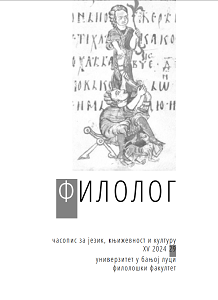THE CULTURAL FACTORS IN SHAPING IMAGE FOR SIGN LEXICALISATION
THE CULTURAL FACTORS IN SHAPING IMAGE FOR SIGN LEXICALISATION
Author(s): Ni Putu Luhur Wedayanti, Alies Poetri LintangsariSubject(s): Semiotics / Semiology, Theoretical Linguistics, Lexis, Sociolinguistics, Culture and social structure , Sociology of Culture
Published by: Филолошки факултет Универзитета у Бањој Луци
Keywords: cultural factors; food sign; kata kolok; lexicalization;
Summary/Abstract: Food as part of a society’s culture constitutes a cultural aspect that is quite capable of representing the customs of society as well as the dynamics of social and economic changes that occur in society. With this general background, this paper aims to examine the basis of image selection of food signs in Kata Kolok sign language. The qualitative method of analysis is used with a focus on the linguistic phenomenon that exist in the deaf community of Bengkala village, northern part of Bali Island. The data used in this study were collected from Kata Kolok corpus data available at www. signbank.ru.nl. From the available sign data, this study focuses on food signs data, which is then classified into traditional food and non-traditional food. From the results, it can be claimed that the deaf community of Bengkala village chose how to make food as an image that was selected to be a sign for traditional food because people in the village have good traditional knowledge about processing those foods. Meanwhile, the image chosen as a representation of non-traditional food is the appearance of the food.
Journal: Филолог – часопис за језик, књижевност и културу
- Issue Year: 15/2024
- Issue No: 29
- Page Range: 521-538
- Page Count: 18
- Language: English

